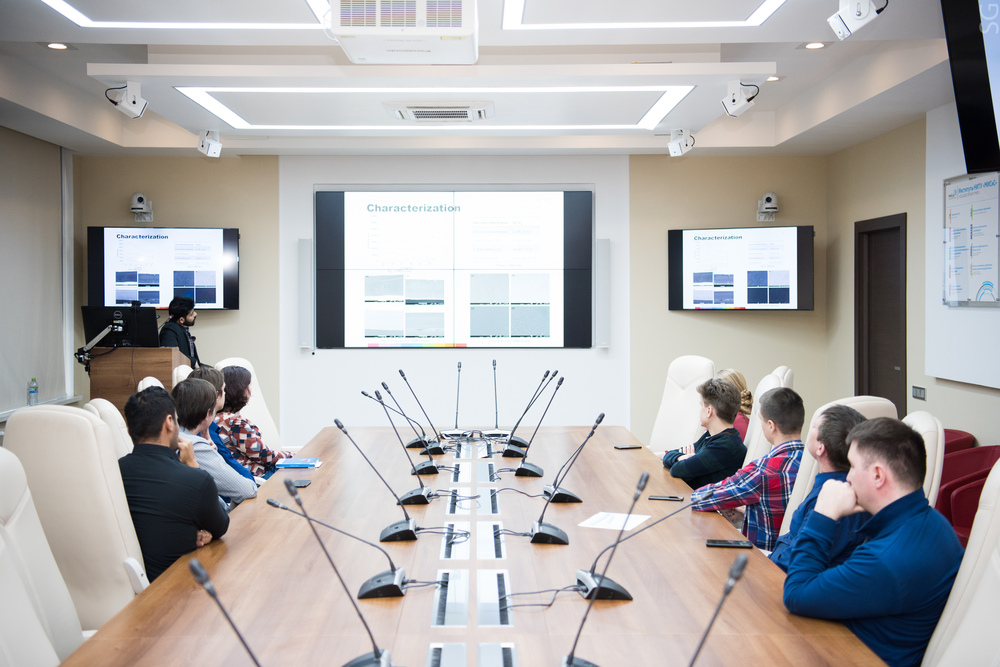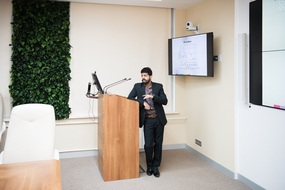Today, NUST MISIS employs ten PostDocs from Russia and six countries of the world: the Republic of Belarus, Pakistan, Kazakhstan, Greece, India, Colombia. Young scientists conduct research in various fields — biomedicine, materials science, theoretical physics and quantum technologies. Today, regardless of whether they have access to the laboratory or not, they continue to work on their projects, analyze data and write articles for international scientific journals.
The luckiest ones are the theoretical physicists, because, according to scientists, nothing has changed in their work.
“I only require a good computer to continue my research. I am constantly in touch with my supervisor and collaborators through mails, Skype, etc.”, — said a PostDoc of the NUST MISIS Department of Theoretical Physics and Quantum Technologies Abkhik Mukherjee.
The experimental work had to be paused due to limited access to laboratories. However, young scientists use this time to analyze already collected data, review literature and write scientific articles.
“I have been working on my polymer composite membranes for wastewater and gas separation project for more than a year so I have data which I am compiling and using for writing papers. I am also concentrating on planning for my future work and preparing a list of required chemicals and instruments once the lab reopens,” said Vignesh Nayak, a PostDoc of the NUST MISIS Center for Composite Materials.
Rajan Choudhary, who also works at the Center for Composite Materials at NUST MISIS and develops bioactive scaffolds for the regeneration of hard (bone) tissues, in addition to working on his project, is exploring new programs for work and opportunities for receiving grant support.
“In the current situation, I read a lot of reports which helps me to write a review article as well as to identify the challenges in my research area to frame a potential proposal. Apart from these, I interpret data received during previous experiments, correct and revise already written manuscripts, learn different software (SolidWorks) to enhance my skills. In my view, the resources provided by NUST MISIS are enough to continue remote work,” says Rajan Choudhary.
As for the daily routine, the PostDocs note that they work in the same mode: for some of them, this is a standard eight-hour workday, and some are so immersed in the study that they can sit for an entire day to analyze the data. In their free time, young scientists play sports, cook, watch films and learn foreign languages.
“I try to continue working with my usual timetable (Monday to Friday from 8 am to 5 pm), then I do some small workout — some exercises with my body weight. At nights I watch some movies and the weekends I am taking an online Russian language course ”, - the postdoc of the Hybrid Nanostructured Materials laboratory Jairo Muñoz shared his schedule. In his work, the scientist mainly researches the mechanical properties of homogeneous metals (steels, copper, aluminum alloys) obtained by the method of intense plastic deformation. A hypoeutectic Al alloy obtained by selective laser melting (SLM) has been 3D printed as a result of his research.
In April, within the framework of the Russian Academic Excellence Project
The NUST MISIS PostDoc Research program is an open international competition for university grants to support young scientists with international experience who are invited to conduct joint research at the leading NUST MISIS laboratories. The competition is open to scientists under 35 years old with an international Ph.D. degree and experience in leading international research centers for a total of at least 2 years.




